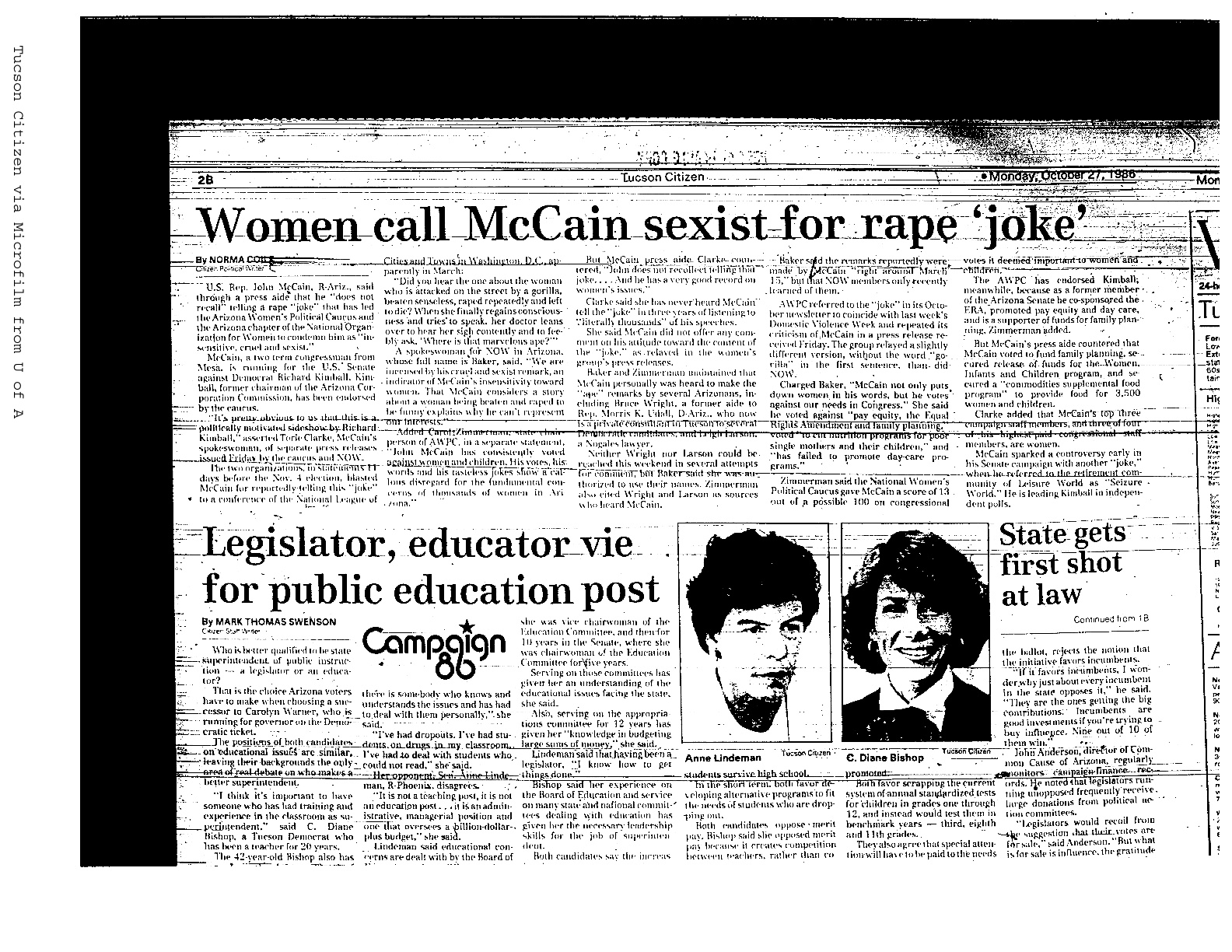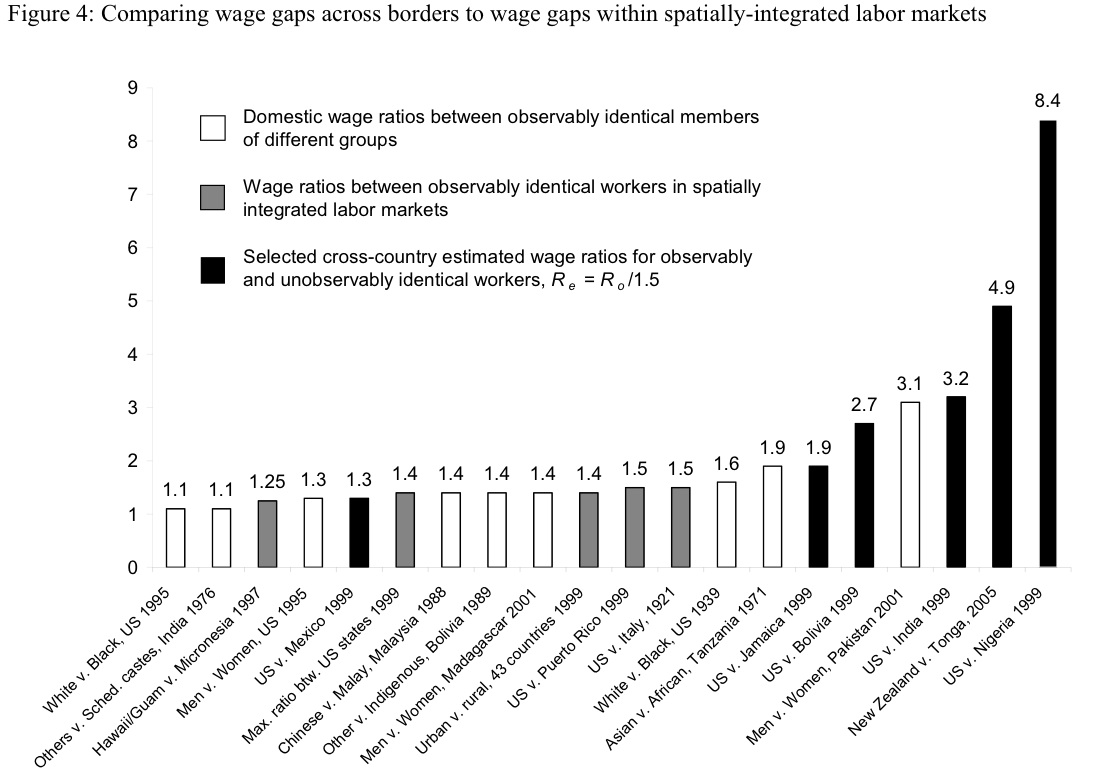Found at the Onion thanks to Caroline H.!
gender
Parents, feminists, and cultural critics often express dismay at Barbie, Bratz, and similar fashion-type dolls for girls that are often sexualized and have extremely unrealistic body proportions, leading many to argue that they provide bad models for children and may promote negative body image among girls.
As a result, every so often “anti-Barbie”-type dolls come out. They often have more realistic body proportions and aim to provide a wider range of images of women and girls in terms of activities, dress, and/or careers. One example of this was the Get Real Girl line that came out around 2001 in the U.S. (images found here):
Here’s a description from this website:
While other dolls teeter on feet formed for high-heels, Get Real Girls stand on their own two feet, have posable, fully-articulated bodies and display physical tone and definition for full-action play. The Girls’ faces have soft natural features and are dressed in authentic sports clothing.
And yet, as with so many of these types of dolls, as far as I can tell, these were short-lived. The website is basically defunct–you can go to it, but there are no working links to the supposedly interactive features. I couldn’t find any websites currently selling the dolls.
This brings up some interesting issues, particularly the fact that what parents want their kids to want and what kids actually want often do not coincide. As I’ve discussed before, kids often have their own ideas about toys and how to play with them and may reject the non-traditional toys their parents think they ought to be crazy about. They may shy away from these toys because they aren’t like the ones their friends are playing with or that they see on TV. Or they may come up against one major problem with creating new types of dolls for girls: if they have more realistic body proportions, they don’t fit into the wide array of clothing and shoes designed for dolls with Barbie’s proportions. There’s an inertia in the toy industry because of this–new, differently-shaped dolls don’t fit the clothes and accessories kids may already own and the range of outfits available to put on them is limited because the market for them is so new and small. However, this problem can apparently be overcome, since according to this website Barbie is bigger than the Bratz dolls and so can’t really wear clothing designed for them (the site also helpfully warns against over-brushing Bratz dolls’ hair), and yet they became wildly popular (to the dismay of many parents).
I just thought these might be interesting for a discussion of the toy industry generally, efforts to provide alternatives to Barbie-type dolls, and the difficulties of doing so due to the fact that kids just might not like them.
Dubi K. sent in these two images (found here) and some commentary. This first image came from an ultra-orthodox Israeli newspaper:
Dubi says,
As you can easily see, it was heavily photoshopped – kids are
duplicated all over the place. Originally, the people who posted this
image on an Israeli forum thought that the publishers of the paper
were trying to make it look more crowded, as it was an event sponsored
by the paper.
But here is the original, non-photoshopped image:
Again, here’s Dubi:
A careful comparison will show that all duplicated children are there to hide girls…It’s commonplace in ultra-orthodox papers that pictures of women are not shown (including Israeli foreign minister Livni and US Secretary of State Rice), to prevent impure thoughts in the minds of the readers. Here they simply took this idea to its logical extreme. It’s the obverse case of the sexualizing of women that you normally discuss in your blog: rather than take women and present them as merely sexual beings, these “traditional” papers assume that women are merely sexual beings in the eyes of men, and so they completely eliminate them from view.
Awesome images and analysis, Dubi! And if you just happen to read Hebrew, you can read Dubi’s original post about this here.
In a comment to another post, Umlud provided a link to this post from Thoughts from Kansas about the following joke allegedly told by John McCain in 1986 when speaking to the National League of Cities and Towns:
Did you hear the one about the woman who is attacked on the street by a gorilla, beaten senseless, raped repeatedly and left to die? When she finally regains consciousness and tries to speak, her doctor leans over to hear her sigh contently and to feebly ask, “Where is that marvelous ape?”
Here is an image of the original story about the incident in the Tucson Citizen (link to image found at Think Progress). I know it’s small and hard to read, but I wanted to provide the original source.
According to Think Progress,
McCain said he did not “recall” telling the joke. More recently, the McCain campaign scheduled a fundraiser with a Texas oilman who compared rape to the weather while running for governor. “As long as it’s inevitable, you might as well lie back and enjoy it,” said Clayton Williams in 1990. After public outcry, the event was “postponed.”
From what I recall, the comment by Williams was widely credited as a major reason Ann Richards won the gubernatorial campaign, becoming the second female governor of Texas.
Huh. I was looking up some information on Ann Richards really quick and discovered this list of the governors of Texas and discovered there have only been 6 Republican governors of Texas, and two of those were right after the Civil War, when the Republican party had quite a different platform and orientation. The other 4 have all been since 1979. And my home state of Oklahoma has only had 4. This shouldn’t be surprising, given that the Southern swing to the Republican party occurred mostly after the Civil Rights movement and Civil Rights legislation signed into law by President Lydon Johnson (who correctly predicted that the Democratic party would lose the South as a result of the policies), but it still surprised me.
Thanks for the link, Umlud!
I took these two photos of pacifiers for sale at a Babies-R-Us in upstate New York:
I hate the way we start labeling girls at a young age as high-maintenance divas who are vain, boy-crazy, and spend a lot of money. And we now start socializing infants into gendered stereotypes that portray girls in ways that, though superficially humorous, also imply that we expect girls and women to be self-centered, ridiculous people. For other examples of these types of messages, see here, here, and here.
NEW: Blanca M. took a picture of this sign for Little Divas, a store here in Vegas that provides a great example of the association between little girls and diva-hood:
Thanks, Blanca!
Gwen Sharp is an associate professor of sociology at Nevada State College. You can follow her on Twitter at @gwensharpnv.
Z from It’s The Thought That Counts sends us this figure showing the wage gap between various types of groups. The point is to show that wage differentials are most extreme across countries, not within them. In an article, Kerry Howley writes:
Wage gaps between observably identical Nigerian workers in the United States and Nigerian workers in Nigeria (same gender, education, work experience, etc) are… considerable. They swamp the wage gaps between men and women in the US. They swamp the gaps between whites and blacks in the US. Actually, they swamp the wage gaps between whites and blacks in the United States in 1855. For several countries, the effect of border restrictions on the wages of workers of equal productivity “is greater than any form of wage discrimination (gender, race, or ethnicity) that has ever been measured.” The labor protectionism that keeps poor workers out of rich countries upholds one of the largest remaining price distortions in any global market.
Click here for the full research report.
Here is an ad put out by the McCain campaign that associates Obama with Britney Spears and Paris Hilton:
What struck me about it is that associating Obama with some young women is a way to imply he’s not a serious candidate (see this post from yesterday on a similar theme). I mean, they could have used, say, Tom Cruise of one of the examples of overwhelming celebrity, but part of the image of the Obama campaign is that many of his followers are sexy but vapid young women. (Also, as far as I’m aware neither Britney Spears nor Paris Hilton have actually been connected to Obama, unlike Scarlett Johansson, who sent him emails; the media frenzy over the idea that he was her “email buddy” eventually forced him to distance himself from any association with her. Why this was such a big deal, I do not know, since there was no indication that the emails were inappropriate in any way.)
Also: Paris Hilton has now become part of our political discourse? Really?
NEW: Marc S. sent in a link to the humorous response from Paris Hilton. It might be a humorous intro to a discussion of the way that we assume that certain types of femininity (particularly the type associated with tanning and liking the color pink) are incompatible with being intelligent or politically aware.
Thanks, Marc!
Gwen Sharp is an associate professor of sociology at Nevada State College. You can follow her on Twitter at @gwensharpnv.
Parents, feminists, and cultural critics often express dismay at Barbie, Bratz, and similar fashion-type dolls for girls that are often sexualized and have extremely unrealistic body proportions, leading many to argue that they provide bad models for children and may promote negative body image among girls.
As a result, every so often “anti-Barbie”-type dolls come out. They often have more realistic body proportions and aim to provide a wider range of images of women and girls in terms of activities, dress, and/or careers. One example of this was the Get Real Girl line that came out around 2001 in the U.S. (images found here):
Here’s a description from this website:
While other dolls teeter on feet formed for high-heels, Get Real Girls stand on their own two feet, have posable, fully-articulated bodies and display physical tone and definition for full-action play. The Girls’ faces have soft natural features and are dressed in authentic sports clothing.
And yet, as with so many of these types of dolls, as far as I can tell, these were short-lived. The website is basically defunct–you can go to it, but there are no working links to the supposedly interactive features. I couldn’t find any websites currently selling the dolls.
This brings up some interesting issues, particularly the fact that what parents want their kids to want and what kids actually want often do not coincide. As I’ve discussed before, kids often have their own ideas about toys and how to play with them and may reject the non-traditional toys their parents think they ought to be crazy about. They may shy away from these toys because they aren’t like the ones their friends are playing with or that they see on TV. Or they may come up against one major problem with creating new types of dolls for girls: if they have more realistic body proportions, they don’t fit into the wide array of clothing and shoes designed for dolls with Barbie’s proportions. There’s an inertia in the toy industry because of this–new, differently-shaped dolls don’t fit the clothes and accessories kids may already own and the range of outfits available to put on them is limited because the market for them is so new and small. However, this problem can apparently be overcome, since according to this website Barbie is bigger than the Bratz dolls and so can’t really wear clothing designed for them (the site also helpfully warns against over-brushing Bratz dolls’ hair), and yet they became wildly popular (to the dismay of many parents).
I just thought these might be interesting for a discussion of the toy industry generally, efforts to provide alternatives to Barbie-type dolls, and the difficulties of doing so due to the fact that kids just might not like them.
Dubi K. sent in these two images (found here) and some commentary. This first image came from an ultra-orthodox Israeli newspaper:
Dubi says,
As you can easily see, it was heavily photoshopped – kids are
duplicated all over the place. Originally, the people who posted this
image on an Israeli forum thought that the publishers of the paper
were trying to make it look more crowded, as it was an event sponsored
by the paper.
But here is the original, non-photoshopped image:
Again, here’s Dubi:
A careful comparison will show that all duplicated children are there to hide girls…It’s commonplace in ultra-orthodox papers that pictures of women are not shown (including Israeli foreign minister Livni and US Secretary of State Rice), to prevent impure thoughts in the minds of the readers. Here they simply took this idea to its logical extreme. It’s the obverse case of the sexualizing of women that you normally discuss in your blog: rather than take women and present them as merely sexual beings, these “traditional” papers assume that women are merely sexual beings in the eyes of men, and so they completely eliminate them from view.
Awesome images and analysis, Dubi! And if you just happen to read Hebrew, you can read Dubi’s original post about this here.
In a comment to another post, Umlud provided a link to this post from Thoughts from Kansas about the following joke allegedly told by John McCain in 1986 when speaking to the National League of Cities and Towns:
Did you hear the one about the woman who is attacked on the street by a gorilla, beaten senseless, raped repeatedly and left to die? When she finally regains consciousness and tries to speak, her doctor leans over to hear her sigh contently and to feebly ask, “Where is that marvelous ape?”
Here is an image of the original story about the incident in the Tucson Citizen (link to image found at Think Progress). I know it’s small and hard to read, but I wanted to provide the original source.
According to Think Progress,
McCain said he did not “recall” telling the joke. More recently, the McCain campaign scheduled a fundraiser with a Texas oilman who compared rape to the weather while running for governor. “As long as it’s inevitable, you might as well lie back and enjoy it,” said Clayton Williams in 1990. After public outcry, the event was “postponed.”
From what I recall, the comment by Williams was widely credited as a major reason Ann Richards won the gubernatorial campaign, becoming the second female governor of Texas.
Huh. I was looking up some information on Ann Richards really quick and discovered this list of the governors of Texas and discovered there have only been 6 Republican governors of Texas, and two of those were right after the Civil War, when the Republican party had quite a different platform and orientation. The other 4 have all been since 1979. And my home state of Oklahoma has only had 4. This shouldn’t be surprising, given that the Southern swing to the Republican party occurred mostly after the Civil Rights movement and Civil Rights legislation signed into law by President Lydon Johnson (who correctly predicted that the Democratic party would lose the South as a result of the policies), but it still surprised me.
Thanks for the link, Umlud!
I took these two photos of pacifiers for sale at a Babies-R-Us in upstate New York:
I hate the way we start labeling girls at a young age as high-maintenance divas who are vain, boy-crazy, and spend a lot of money. And we now start socializing infants into gendered stereotypes that portray girls in ways that, though superficially humorous, also imply that we expect girls and women to be self-centered, ridiculous people. For other examples of these types of messages, see here, here, and here.
NEW: Blanca M. took a picture of this sign for Little Divas, a store here in Vegas that provides a great example of the association between little girls and diva-hood:
Thanks, Blanca!
Gwen Sharp is an associate professor of sociology at Nevada State College. You can follow her on Twitter at @gwensharpnv.
Z from It’s The Thought That Counts sends us this figure showing the wage gap between various types of groups. The point is to show that wage differentials are most extreme across countries, not within them. In an article, Kerry Howley writes:
Wage gaps between observably identical Nigerian workers in the United States and Nigerian workers in Nigeria (same gender, education, work experience, etc) are… considerable. They swamp the wage gaps between men and women in the US. They swamp the gaps between whites and blacks in the US. Actually, they swamp the wage gaps between whites and blacks in the United States in 1855. For several countries, the effect of border restrictions on the wages of workers of equal productivity “is greater than any form of wage discrimination (gender, race, or ethnicity) that has ever been measured.” The labor protectionism that keeps poor workers out of rich countries upholds one of the largest remaining price distortions in any global market.
Click here for the full research report.
Here is an ad put out by the McCain campaign that associates Obama with Britney Spears and Paris Hilton:
What struck me about it is that associating Obama with some young women is a way to imply he’s not a serious candidate (see this post from yesterday on a similar theme). I mean, they could have used, say, Tom Cruise of one of the examples of overwhelming celebrity, but part of the image of the Obama campaign is that many of his followers are sexy but vapid young women. (Also, as far as I’m aware neither Britney Spears nor Paris Hilton have actually been connected to Obama, unlike Scarlett Johansson, who sent him emails; the media frenzy over the idea that he was her “email buddy” eventually forced him to distance himself from any association with her. Why this was such a big deal, I do not know, since there was no indication that the emails were inappropriate in any way.)
Also: Paris Hilton has now become part of our political discourse? Really?
NEW: Marc S. sent in a link to the humorous response from Paris Hilton. It might be a humorous intro to a discussion of the way that we assume that certain types of femininity (particularly the type associated with tanning and liking the color pink) are incompatible with being intelligent or politically aware.
Thanks, Marc!
Gwen Sharp is an associate professor of sociology at Nevada State College. You can follow her on Twitter at @gwensharpnv.









